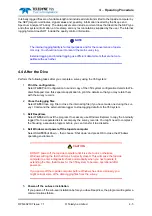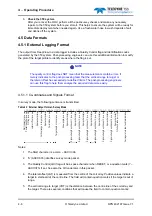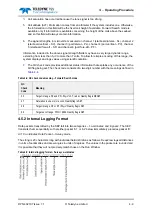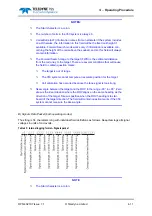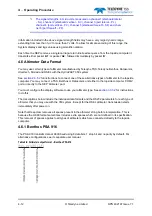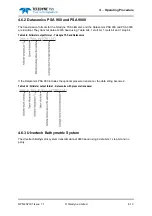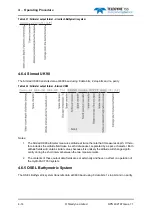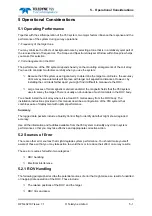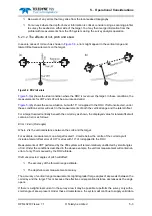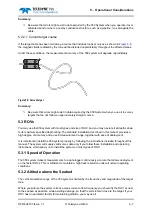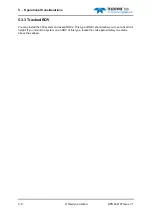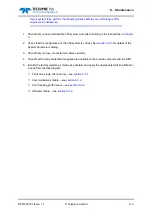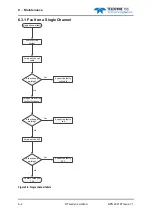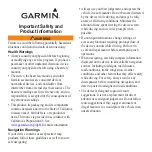
5 – Operational Considerations
DPN 402197 Issue 7.1
© Teledyne Limited
5- 3
❐
Be aware of any errors that may arise from the local seabed topography.
❐
For surveys where the depth-of-cover information is critical, consider using a scanning profiler
to survey the seabed on either side of the target. You may then merge information from the
profiler with measurements from the 350 system during the survey analysis operation.
5.2.1.2 The effects of roll, pitch and skew
In severe cases of roll such as shown in
, errors might appear in the vertical range and
lateral offset measurements on the target.
Figure 5-3: ROV roll errors
(a) shows the ideal condition where the ROV is level over the target. In these conditions, the
measurements for VRT and LAT will be accurate and valid.
(b) shows the same situation, but with 15° roll applied to the ROV. If left uncorrected, under
these conditions errors will exist in the measurements of both the vertical range and the lateral offset.
For a target located centrally beneath the coil array as shown, the displayed value for lateral offset will
contain an error as follows:
Error
= Z.sin (
Roll angle
)
Where
Z
is the vertical distance between the coils and the target.
For example, measurements on a target located 1.0 metre below the centre of the coil array will
include a lateral offset error of 0.17 metres with 10° of roll applied to the ROV.
Measurements of VRT performed by the 350 system will remain relatively unaffected by small angles
of roll. Under the conditions described in the above example, the vertical measurement will contain an
error of only 15mm caused by the ROV attitude.
If left uncorrected, angles of pitch will affect:
❐
The accuracy of the forward range estimate.
❐
The depth-of-cover measurement accuracy.
The accuracy of vertical range measurements might degrade if large angles of skew exist between the
coil array and the target. This is because the effective coil separation distance decreases as the angle
opens.
If there is a slight crosscurrent in the survey area, it may be possible to perform the survey only with a
small angle of skew present. Under these circumstances, the system will continue to supply valid data

